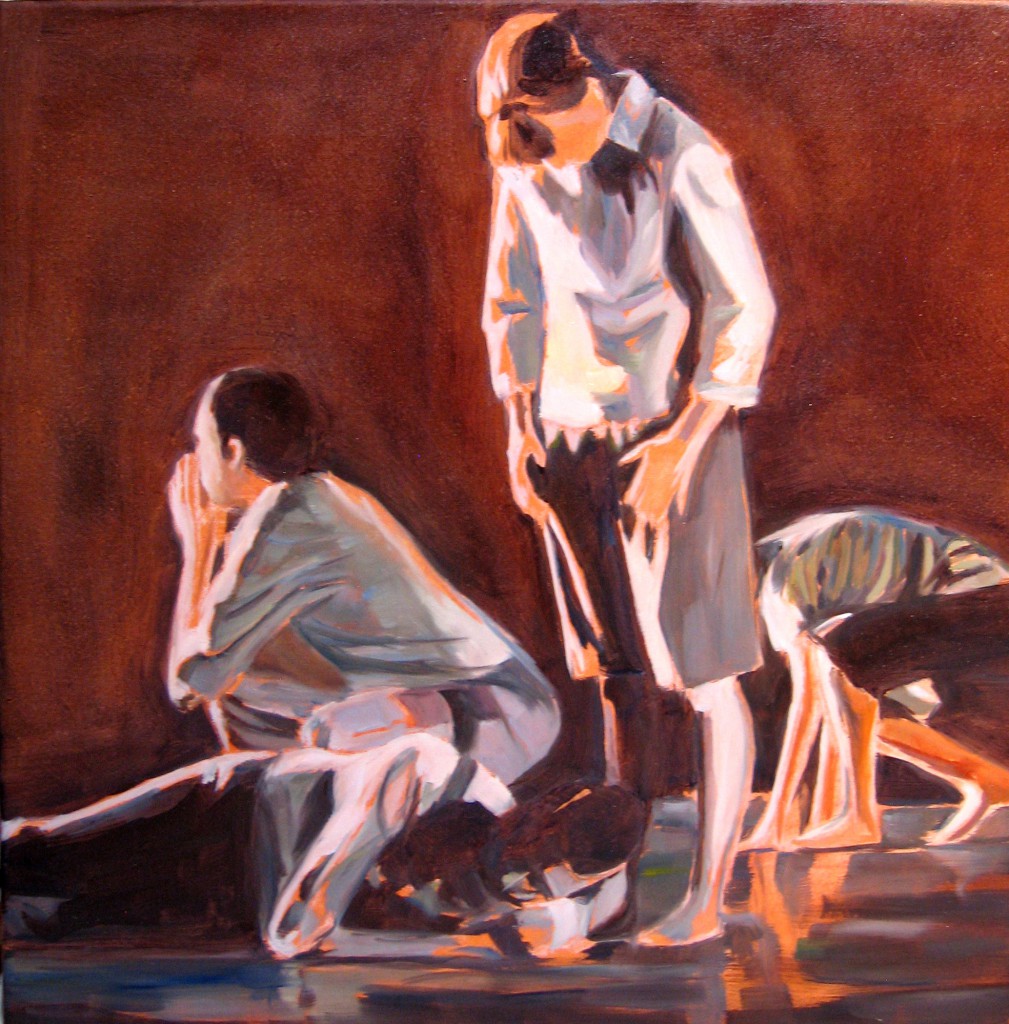Researching Contemporary Dance
BY EMMALY WIEDERHOLT; PAINTING BY JULIA COST
I’m here to say: I don’t really know what contemporary dance is. “Contemporary” means new, so therefore contemporary dance must be relatively new choreography or composition. Most of us who have pursued dance (in almost any genre) have at some point encountered the word “contemporary” used in relation to our dancing. Being a performance art, it’s only appropriate that dance is often new.
However, the term “contemporary dance” seems to connote something beyond simply “new” dance. It seems to connote a genre within dance: there are ballet dancers, hula dancers, tap dancers, contemporary dancers, etc. It is used as a distinguishing term. But what exactly makes a contemporary dancer?
I am guilty of hypocrisy here. When meeting someone new who asks what kind of dance I do, I’ve more than once answered, “Contemporary dance,” knowing that “ballet” would invite unwanted stereotypes, and saying, “I study several different forms and approaches with the intent of pushing what dance can be” sounds obscure. Answering “contemporary dance” feels like a compromise, although I recognize in that instance I’m copping out.
The best insight I’ve found into what contemporary dance entails came when I attended “Pichet Klunchun and Myself” by Jerome Bel in San Francisco in 2009. Pichet Klunchun is a traditional Thai dancer and Jerome Bel is an out-of-the-box French choreographer. The show consisted of a staged conversation between the two. I’ve since acquired a video of the performance, and here is what Jerome Bel told Pichet Klunchun on the subject of contemporary dance:
“What I’m doing belongs to a little community in the West called the contemporary arts. I’m working in a field called contemporary dance, which belongs in the contemporary arts. In the contemporary arts you have dance, music, theater, visual art, films. In this community, you have three groups. First: the artist. The contemporary artist’s work is to create new forms to represent the reality of today. But, as our reality of today is different than the realities of before, he or she needs to find some new forms. To find new forms is difficult. You cannot use old forms. So you need to do research.
“Research takes time. And you need to eat. You need money. Here is the second group: the government. Some people in the government decide to save a little amount of money for the contemporary arts. They give the money to the contemporary artist for them to make the research to try to find some new forms. [Don’t we wish!] But, when they give the money, they don’t know what the artist will do. The artist doesn’t know what she or he will do. Otherwise they are not contemporary artists. When you are a contemporary artist, you don’t know what you are doing. That’s why you have to do research.
“The third group is the audience. When the audience buys a ticket for a contemporary dance performance, they don’t know what they will see. That’s why I don’t understand when they ask for their money back. I didn’t promise anything. I’m a contemporary artist. I don’t know what I’m doing. People come and respond, and then I start to understand better what I’ve done.”
Hearing this in 2009 for the first time was an “Aha” moment. It shifted the paradigm for me: as dance artists, we can be more than automatons dutifully performing repertoire. We can do research to help find representations of our reality. This way of working feels…honest. At least in theory.
For the next several weeks, Stance on Dance is featuring the voices of contemporary dance artists across the country. I ask them to describe contemporary dance in layman’s terms, how one trains in it, how it evolved, and what the future of contemporary dance looks like.
I wrote that doing contemporary dance research feels honest in theory because I worry that a lot of contemporary dance forgets it’s doing research. Often, when I see contemporary dance shows, they seem to be shamelessly attempting to please the audience, unabashedly imitating what other dance artists have already achieved success doing, or isolating the audience to boredom. The third, in my opinion, is by far the lesser sin of the three. Part of my motivation in interviewing contemporary dance artists is to suss out where these problematic detours from honest research come from.
I’ll leave you with one more quote. The painter Ran Ortner said: “Art is not a skill contest, nor an innovation contest. Art is an honesty contest. If we can be precisely who we are, in the most intimate and candid and courageous way, we will start to connect to the universal.”
In thinking of doing contemporary dance research to represent the realities of today, honesty seems a pretty good place to start.


3 Responses to “Researching Contemporary Dance”
Thanks for reading and commenting Geoff! And happy dance-making!
Thank you. This was educational, thought-provoking and well-delivered. “Studying several different forms and approaches with the intent of pushing what dance can be” sounds great to me! I would surely blaze a trail off into obscurity if I had to explain 🙂
Thank you. This was educational, thought-provoking and well-delivered. “Studying several different forms and approaches with the intent of pushing what dance can be” sounds great to me! I would surely blaze a trail into obscurity if I had to explain.
Comments are closed.